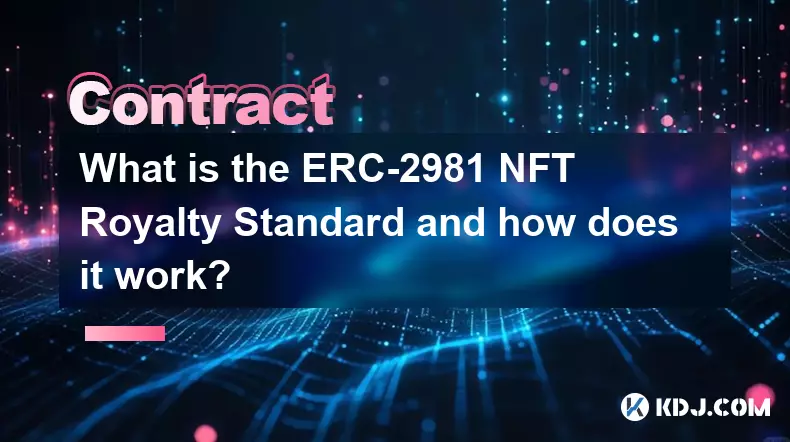-
 bitcoin
bitcoin $102182.982207 USD
-0.92% -
 ethereum
ethereum $3438.744518 USD
0.12% -
 tether
tether $0.999933 USD
0.02% -
 xrp
xrp $2.405093 USD
0.05% -
 bnb
bnb $956.306114 USD
-0.53% -
 solana
solana $153.028851 USD
-1.23% -
 usd-coin
usd-coin $0.999800 USD
-0.03% -
 tron
tron $0.294898 USD
-1.08% -
 dogecoin
dogecoin $0.171428 USD
-0.58% -
 cardano
cardano $0.551186 USD
-1.15% -
 hyperliquid
hyperliquid $38.755878 USD
0.04% -
 chainlink
chainlink $15.298460 USD
-0.05% -
 bitcoin-cash
bitcoin-cash $516.067428 USD
1.68% -
 stellar
stellar $0.280726 USD
-0.42% -
 zcash
zcash $518.919369 USD
18.01%
What indicators to look at in Bitcoin contracts
Monitoring volume, open interest, and funding rate provides valuable insights into market activity and potential price trends in Bitcoin contracts.
Nov 10, 2024 at 10:46 am

Engaging in Bitcoin contracts requires careful consideration of a range of indicators to optimize trading strategies and make informed decisions. This comprehensive guide delves into the key indicators that traders should monitor when evaluating Bitcoin contracts:
- Volume:
- Volume gauges the number of contracts traded within a given timeframe.
- High volume indicates increased market activity, potentially signaling a trend reversal or a significant price move.
- Low volume can indicate a lack of interest or liquidity, which may lead to slow or choppy price action.
- Open Interest:
- Open interest represents the number of outstanding contracts that have not yet been closed.
- Rising open interest alongside a rising price trend suggests that traders are bullish and anticipate further gains.
- Declining open interest during an uptrend may indicate that traders are taking profits or reducing their exposure to risk.
- Funding Rate:
- The funding rate is a periodic payment made between long and short positions in a perpetual contract.
- A positive funding rate implies that long positions are paying short positions, indicating a higher demand for long contracts.
- A negative funding rate indicates the opposite, suggesting a stronger preference for short contracts.
- Market Sentiment:
- Market sentiment gauges the overall mood of traders towards a particular asset.
- Positive sentiment is reflected in high bullish sentiment and low bearish sentiment.
- Negative sentiment, on the other hand, is characterized by high bearish sentiment and low bullish sentiment.
- Technical Indicators:
- Technical indicators analyze price and volume data to identify potential trading opportunities.
- Widely used indicators include moving averages, Bollinger Bands, and relative strength index (RSI).
- These indicators can provide insights into trend direction, volatility, and overbought or oversold conditions.
- Fundamental Factors:
- Fundamental factors encompass broader economic, industry, and regulatory events that can impact Bitcoin's price.
- News about Bitcoin's adoption, regulatory changes, and technological advancements can trigger significant price movements.
- It is essential to stay informed about these factors to gauge their potential impact on Bitcoin contracts.
- Order Book:
- The order book displays the outstanding buy and sell orders for a particular contract.
- The size and depth of the order book provide insights into the liquidity and potential price movements.
- A thick order book indicates high liquidity, while a thin order book suggests lower liquidity and potentially greater price volatility.
- Risk Management:
- Risk management is crucial to protect against potential losses in Bitcoin contracts.
- Implementing risk-limiting measures such as stop-loss orders, position sizing, and leverage management is essential.
- Traders should carefully assess their risk tolerance and determine the appropriate leverage level based on their trading style and capital size.
Disclaimer:info@kdj.com
The information provided is not trading advice. kdj.com does not assume any responsibility for any investments made based on the information provided in this article. Cryptocurrencies are highly volatile and it is highly recommended that you invest with caution after thorough research!
If you believe that the content used on this website infringes your copyright, please contact us immediately (info@kdj.com) and we will delete it promptly.
- Ripple, XRP, Warning: Navigating the Deepfake Crypto Scam Landscape
- 2025-11-13 08:50:01
- The US Mint, Pennies, and Circulation: End of an Era?
- 2025-11-13 08:45:01
- Penny's End: Production Halt Sparks Cost-Saving Debate
- 2025-11-13 10:40:01
- Bitcoin, Wall Street, and the Great Reset: What's Really Going On?
- 2025-11-13 10:55:01
- US Mint Penny Retirement: A New Era for American Coinage
- 2025-11-13 08:50:01
- Penny Wise, Production Foolish? US Mint Halts Penny Production for Cost Savings
- 2025-11-13 09:10:01
Related knowledge

What is a Denial of Service (DoS) attack in a smart contract and what are its common forms?
Nov 10,2025 at 05:20am
Understanding Denial of Service in Smart Contracts1. A Denial of Service (DoS) attack in the context of smart contracts refers to a scenario where a m...

What is a cryptographic nonce used for in transaction signing?
Nov 11,2025 at 05:59am
Understanding Cryptographic Nonces in Blockchain Transactions1. A cryptographic nonce is a random or pseudo-random number used only once in the contex...

How does inheritance work in Solidity smart contracts?
Nov 11,2025 at 10:40pm
Inheritance in Solidity: Building Modular Smart Contracts1. Inheritance in Solidity allows one contract to adopt the properties and functions of anoth...

What is the difference between an Externally Owned Account (EOA) and a Contract Account?
Nov 13,2025 at 04:00am
Understanding Externally Owned Accounts (EOA)1. An Externally Owned Account is controlled directly by a private key, which means only the holder of th...

What is the ERC-2981 NFT Royalty Standard and how does it work?
Nov 13,2025 at 05:39am
Understanding the ERC-2981 NFT Royalty Standard1. The ERC-2981 standard is a proposed Ethereum Request for Comment that introduces a royalty mechanism...

What is a Minimal Proxy Contract (EIP-1167) and how does it save gas on deployment?
Nov 12,2025 at 11:39am
What is a Minimal Proxy Contract (EIP-1167)?1. A Minimal Proxy Contract, standardized under Ethereum Improvement Proposal (EIP) 1167, is a lightweight...

What is a Denial of Service (DoS) attack in a smart contract and what are its common forms?
Nov 10,2025 at 05:20am
Understanding Denial of Service in Smart Contracts1. A Denial of Service (DoS) attack in the context of smart contracts refers to a scenario where a m...

What is a cryptographic nonce used for in transaction signing?
Nov 11,2025 at 05:59am
Understanding Cryptographic Nonces in Blockchain Transactions1. A cryptographic nonce is a random or pseudo-random number used only once in the contex...

How does inheritance work in Solidity smart contracts?
Nov 11,2025 at 10:40pm
Inheritance in Solidity: Building Modular Smart Contracts1. Inheritance in Solidity allows one contract to adopt the properties and functions of anoth...

What is the difference between an Externally Owned Account (EOA) and a Contract Account?
Nov 13,2025 at 04:00am
Understanding Externally Owned Accounts (EOA)1. An Externally Owned Account is controlled directly by a private key, which means only the holder of th...

What is the ERC-2981 NFT Royalty Standard and how does it work?
Nov 13,2025 at 05:39am
Understanding the ERC-2981 NFT Royalty Standard1. The ERC-2981 standard is a proposed Ethereum Request for Comment that introduces a royalty mechanism...

What is a Minimal Proxy Contract (EIP-1167) and how does it save gas on deployment?
Nov 12,2025 at 11:39am
What is a Minimal Proxy Contract (EIP-1167)?1. A Minimal Proxy Contract, standardized under Ethereum Improvement Proposal (EIP) 1167, is a lightweight...
See all articles










































































